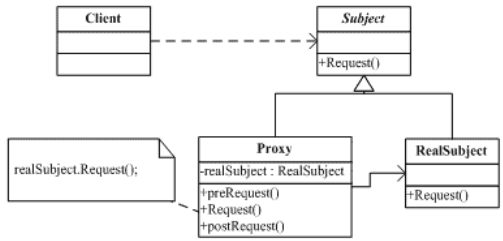在项目实践中发现一个好的日志记录非常重要,你需要借助Logging才能跟踪软件中的错误。所以这里研究下第三方C++库Pantheios的使用。Pantheios的架构分为前端和后端,具体概念介绍参考资料,这里只给出实际如何使用的源码示例。
这里使用的环境:
[1]Windows XP SP3
[2]Visual Studio2008 + SP1
[3]pantheios-1.0.1-beta213
[4] stlsoft-1.9.111
[5]pantheios-libselw-1.9.6.52
配置Pantheios使用环境
第一步:从参考资料[1]下载pantheios-1.0.1-beta213.zip压缩包,并解压。
为pantheios配置系统环境变量,例如
PANTHEIOS_ROOT=E:\SDK\pantheios-1.0.1-beta213
其中“E:\SDK\pantheios-1.0.1-beta213”是解压后的位置
第二步:从参考资料[2]下载stlsoft-1.9.111-hdrs.zip压缩包,并解压。
为stlsoft配置系统环境变量,例如
STLSOFT=E:\SDK\stlsoft-1.9.111
里面只有些头文件,但是我们只需要头文件就足够了。
第三步:启动Visual Studio 2008 命令行,它的位置在[开始]->[ Microsoft Visual Studio 2008]->[ Visual Studio Tools]->[Visual Studio 2008 Command Prompt]。
在VS2008命令行中转到“E:\SDK\pantheios-1.0.1-beta213\build\vc9”路径,输入命令“NMAKE BUILD”开始建立Pantheios库和样例,等待编译、链接完成。
第四步:在VS2008里配置头文件路径和库文件路径
我这里分别是“E:\SDK\pantheios-1.0.1-beta213\include”
“E:\SDK\stlsoft-1.9.111\include”
“E:\SDK\pantheios-1.0.1-beta213\lib”
Pantheios调用示例
项目运行时,Explicitly方式,需要输入依赖库名称,这时你需要“Pantheios Library Selector Tool”在参考资料[4]中下载。参考资料[5]把链接库列表从应用程序中复制出来,张贴到你的项目依赖项(库)中,实际使用碰到了很多问题(例如复制到剪贴板按钮失灵,依赖库找不到、依赖库冲突)所以本文不采用这种方式。
这里由简入繁,举了三个实例来说明Pantheios的使用,它们均是在VS2008的 Win32 Console Application向导中建立和测试通过的。
第一个例子,输出日志到文件中
只有一个源文件源码如下,编译顺利的话可以直接运行:
// testFile.cpp : Defines the entry point for the console application.
//
#include "stdafx.h"
//指定链接库.begin
#include <pantheios/implicit_link/core.h>
#include <pantheios/implicit_link/fe.simple.h>
#include <pantheios/implicit_link/be.file.h>
//指定链接库.end
#define PANTHEIOS_NO_INCLUDE_OS_AND_3PTYLIB_STRING_ACCESS // Faster compilation
/* Pantheios Header Files */
#include <pantheios/pantheios.hpp> // Pantheios C++ main header
#include <pantheios/backends/bec.file.h> // be.file header
/* Standard C/C++ Header Files */
#include <exception> // for std::exception
#include <new> // for std::bad_alloc
#include <string> // for std::string
#include <stdlib.h> // for exit codes
PANTHEIOS_EXTERN_C const PAN_CHAR_T PANTHEIOS_FE_PROCESS_IDENTITY[] = PANTHEIOS_LITERAL_STRING("testFile");
#define PSTR(x) PANTHEIOS_LITERAL_STRING(x)
int _tmain(int argc, _TCHAR* argv[])
{
try
{
//设置文件名
pantheios_be_file_setFilePath(PSTR("kagula-%D-%T.log"),
PANTHEIOS_BE_FILE_F_TRUNCATE, PANTHEIOS_BE_FILE_F_TRUNCATE, PANTHEIOS_BEID_ALL);
//打印到文件
pantheios::log_NOTICE(PSTR("stmt 1"));
pantheios::log_NOTICE(PSTR("stmt 2"));
pantheios::log_NOTICE(PSTR("stmt 3"));
pantheios::log_DEBUG(PSTR("exiting main()"));
return EXIT_SUCCESS;
}
catch(std::bad_alloc&)
{
pantheios::log_ALERT(PSTR("out of memory"));
}
catch(std::exception& x)
{
pantheios::log_CRITICAL(PSTR("Exception: "), x);
}
catch(...)
{
//如果只是打印一条字符串形式的信息,建议用下面这种形式打印日志!
pantheios::logputs(pantheios::emergency, PSTR("Unexpected unknown error"));
}
return EXIT_FAILURE;
}
第二个例子,输出日志到Windows控制台
有三个源文件组成,stdafx.h文件插入了“MY_PROCESS_ID”宏,定义当前进程名称。
implicit_link.cpp文件,用来指定链接库和日志输出等级,第三个文件T2.cpp是示例代码,列举了不同水平的信息输出,和如何格式化输出信息。
stdafx.h源码
#pragma once
#include "targetver.h"
#include <stdio.h>
#include <tchar.h>
// TODO: reference additional headers your program requires here
#define MY_PROGRAM_ID "MyProgramID"
implicit_link.cpp源码
#include "stdafx.h"
#include <pantheios/implicit_link/core.h>
//如果定义了USER_SPECIFIED_LEVEL宏定义,则使用用户自定义的输出等级
//如果不定义“USER_SPECIFIED_LEVEL”宏,表示所有等级的信息都输出
#define USER_SPECIFIED_LEVEL
#ifndef USER_SPECIFIED_LEVEL
#include <pantheios/implicit_link/fe.simple.h>
#endif
//一旦加入下面这条include语句,程序的log输出就会转到Windows控制台
//在本例中,这条语句是必须的。
#include <pantheios/implicit_link/be.WindowsConsole.h>
#ifdef USER_SPECIFIED_LEVEL
PANTHEIOS_CALL(int) pantheios_fe_init(void* reserved,void** ptoken)
{
*ptoken = NULL;
return 0;
}
PANTHEIOS_CALL(void) pantheios_fe_uninit(void* token)
{}
PANTHEIOS_CALL(PAN_CHAR_T const*) pantheios_fe_getProcessIdentity (void * token)
{
return PANTHEIOS_LITERAL_STRING(MY_PROGRAM_ID);
}
PANTHEIOS_CALL(int) pantheios_fe_isSeverityLogged(void* token
, int severity
, int backEndId)
{
//数值越小说明要输出的信息越重要,常用的越先级大小如下
//SEV_CRITICAL=2 < SEV_ERROR=3 < SEV_WARNING=4 < SEV_INFORMATIONAL=6
if(severity <= pantheios::SEV_INFORMATIONAL)
return 1;//允许输出
return 0;
}
#endif
T2.cpp源码
// T2.cpp : Defines the entry point for the console application.
//
#include "stdafx.h"
#include <pantheios/pantheios.hpp> // Pantheios C++ main header
#include <pantheios/inserters/processid.hpp> // for pantheios::processId
#include <pantheios/inserters/threadid.hpp> // for pantheios::threadId
#include <pantheios/inserters/integer.hpp> //for pantheios::integer
#include <pantheios/inserters/real.hpp> //for pantheios::real
#include <pantheios/inserters/blob.hpp> // for pantheios::blob
#include <pantheios/inserters/hex_ptr.hpp> // for pantheios::hex_ptr
#include <pantheios/backend.h>
#include <pantheios/backends/bec.WindowsConsole.h>
#define PSTR(x) PANTHEIOS_LITERAL_STRING(x)
PANTHEIOS_EXTERN_C const PAN_CHAR_T PANTHEIOS_FE_PROCESS_IDENTITY[] = PANTHEIOS_LITERAL_STRING(MY_PROGRAM_ID);
int _tmain(int argc, _TCHAR* argv[])
{
//输出当前进程ID
pantheios::log_NOTICE(PSTR("process id: ["), pantheios::processId, PSTR("]"));
//输出当前线程ID
pantheios::log_NOTICE(PSTR("thread id: ["), pantheios::threadId, PSTR("]"));
//演示:不同等级输出
//典型的输出格式为“MY_PROGRAM_ID.线程ID 时分秒毫秒 等级 日志信息”
//建议把MY_PROGRAM_ID替换为你的进程ID
pantheios::log_DEBUG(PSTR("debug"));
pantheios::log_INFORMATIONAL(PSTR("informational"));
pantheios::log_NOTICE(PSTR("notice"));
pantheios::log_WARNING(PSTR("warning"));
pantheios::log_ERROR(PSTR("error"));
pantheios::log_CRITICAL(PSTR("critical"));
pantheios::log_ALERT(PSTR("alert"));
pantheios::log_EMERGENCY(PSTR("emergency"));
//演示int、float格式化输出
int i=123;
float f=4.567f;
pantheios::log_INFORMATIONAL("[[ i=", pantheios::integer(i),
" f=",pantheios::real(f),"]]");
pantheios::pantheios_logprintf(pantheios::SEV_INFORMATIONAL,PSTR("int=%d, float=%.2g"),i,f);
//演示二进制格式化输出
pantheios::uint8_t bytes[20];
for(size_t i = 0; i < STLSOFT_NUM_ELEMENTS(bytes); ++i)
{
bytes[i] = static_cast<pantheios::uint8_t>(i);
}
//默认打印格式如右"bytes: [03020100070605040b0a09080f0e0d0c13121110]"
pantheios::log_NOTICE(PSTR("bytes: ["), pantheios::blob(bytes, sizeof(bytes)), PSTR("]"));
//四字节为一组当中以空格分隔,打印格式如右 "bytes: [03020100 07060504 0b0a0908 0f0e0d0c 13121110]"
pantheios::log_NOTICE(PSTR("bytes: ["), pantheios::blob(bytes, sizeof(bytes), 4, PSTR(" ")), PSTR("]"));
// 每字节以空格分隔,四个为一行,每行以换行符结尾和两个空格结尾
// 打印格式如下
// "bytes: [00 01 02 03
// 04 05 06 07
// 08 09 0a 0b
// 0c 0d 0e 0f
// 10 11 12 13]"
pantheios::log_NOTICE(PSTR("bytes: ["), pantheios::blob(bytes, sizeof(bytes), 1, PSTR(" "), 4, PSTR("\n ")), PSTR("]"));
//演示打印十六进制指针
//打印格式如右"pv: [0x0012fed0]"
pantheios::log_NOTICE(PSTR("pv: ["), pantheios::hex_ptr(&i), PSTR("]"));
return EXIT_SUCCESS;
}
第三个例子,输出日志到多种流中
主要有两个源文件组成
implicit_link.cpp
#include "stdafx.h"
#include <pantheios/implicit_link/core.h>
#include <pantheios/implicit_link/be.N.h>
#include <pantheios/implicit_link/be.WindowsConsole.h>
#include <pantheios/implicit_link/be.file.h>
PANTHEIOS_CALL(int) pantheios_fe_init(void* reserved,void** ptoken)
{
*ptoken = NULL;
return 0;
}
PANTHEIOS_CALL(void) pantheios_fe_uninit(void* token)
{}
PANTHEIOS_CALL(PAN_CHAR_T const*) pantheios_fe_getProcessIdentity (void * token)
{
return PANTHEIOS_LITERAL_STRING("example");
}
PANTHEIOS_CALL(int) pantheios_fe_isSeverityLogged(void* token
, int severity
, int backEndId)
{
//数值越小说明要输出的信息越重要,常用的越先级大小如下
//SEV_CRITICAL=2 < SEV_ERROR=3 < SEV_WARNING=4 < SEV_INFORMATIONAL=6 < SEV_DEBUG=7
//backEndId=0的时候必须返回1,这样才会进一步调用这个函数,这时会传入详细的backEndId值(1或2)。
if( backEndId==0 )
return 1;
//Windows控制台中只记录SEV_INFORMATIONAL以上级别的信息
if(severity <= pantheios::SEV_INFORMATIONAL && backEndId==1)
return 1;//允许输出
//文件流中只记录严重错误的信息
if(severity <= pantheios::SEV_ERROR && backEndId==2)
return 1;//允许输出
return 0;
}
testPantheios.cpp
// testPantheios.cpp : Defines the entry point for the console application.
//
#include "stdafx.h"
#include <pantheios/util/test/compiler_warnings_suppression.first_include.h>
#define PANTHEIOS_NO_INCLUDE_OS_AND_3PTYLIB_STRING_ACCESS // Faster compilation
/* Pantheios Header Files */
#include <pantheios/pantheios.hpp> // Pantheios C++ main header
#include <pantheios/backends/be.N.h> // pan_be_N_t声明
#include <pantheios/backends/bec.WindowsConsole.h> // Include the API for bec.WindowsConsole
#include <pantheios/backends/bec.file.h> // be.file header
/* Standard C/C++ Header Files */
#include <exception> // for std::exception
#include <new> // for std::bad_alloc
#include <string> // for std::string
#include <stdlib.h> // for exit codes
/* Windows Header Files */
# include <windows.h> // for console colour constants
#include <pantheios/util/test/compiler_warnings_suppression.last_include.h>
PANTHEIOS_EXTERN_C const PAN_CHAR_T PANTHEIOS_FE_PROCESS_IDENTITY[] = PANTHEIOS_LITERAL_STRING("example");
#define PSTR(x) PANTHEIOS_LITERAL_STRING(x)
/* /////////////////////////////////////////////////////////////////////////
* Logging management
*/
enum beid_target
{
beid_Console = 1,
beid_File = 2
};
pan_be_N_t PAN_BE_N_BACKEND_LIST[] =
{
PANTHEIOS_BE_N_STDFORM_ENTRY(beid_Console, pantheios_be_WindowsConsole, 0),
PANTHEIOS_BE_N_STDFORM_ENTRY(beid_File, pantheios_be_file, 0),
PANTHEIOS_BE_N_TERMINATOR_ENTRY
};
int _tmain(int argc, _TCHAR* argv[])
{
try
{
//设置文件输出流
//如果遇到同名文件,原文件的内容会被重写
pantheios_be_file_setFilePath(PSTR("kagula.log"),
PANTHEIOS_BE_FILE_F_TRUNCATE, PANTHEIOS_BE_FILE_F_TRUNCATE, PANTHEIOS_BEID_ALL);
//同时输出到两个目标(文件流和Windows控制台)中
//我重载了pantheios_fe_isSeverityLogged这样两个目标流的输出等级可以分别控制
pantheios::log_DEBUG(PSTR("stmt log_DEBUG")); //没有输出
pantheios::log_NOTICE(PSTR("stmt log_NOTICE")); //只输出到控制台
pantheios::log_ERROR( PTSTR(L"stmt 3")); //输出到控制台和文件流中,log_ERROR不加L会乱码奇怪
pantheios::log_EMERGENCY(PTSTR(L"stmt 4")); //输出到控制台和文件流中,log_EMERGENCY不加L会乱码奇怪
return EXIT_SUCCESS;
}
catch(std::bad_alloc&)
{
pantheios::log(pantheios::alert, PSTR("out of memory"));
}
catch(std::exception& x)
{
pantheios::log_CRITICAL(PSTR("Exception: "), x);
}
catch(...)
{
pantheios::logputs(pantheios::emergency, PSTR("Unexpected unknown error"));
}
return EXIT_FAILURE;
}





